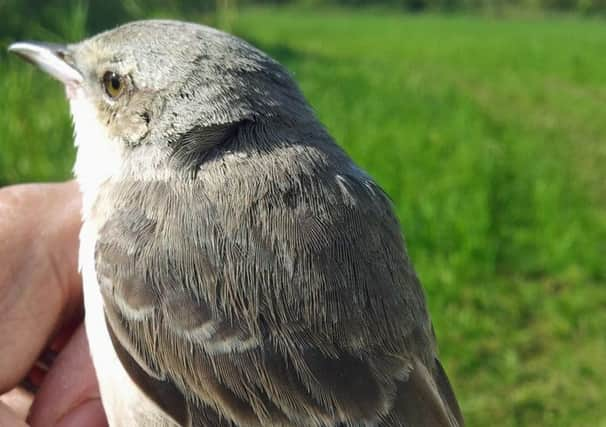Birdwatch: Bill Teale


The birds are usually caught in flight then quickly and safely removed from the nets by experienced ringers before being fitted with lightweight leg rings, weighed and measured and then released again. If the ringed birds are subsequently caught, or controlled as it is known, elsewhere valuable information can be gained as to their migration routes.
Each ringer receives an average of two years’ training from an experienced ringer and a British Trust for Ornithology ringing permit, renewed annually, is a legal requirement.
Advertisement
Hide AdAdvertisement
Hide AdGood numbers of warblers, whinchats, redstarts, wheatears, pied flycatchers and yellow wagtails are all being reported at ringing sites well away from breeding areas.
There is always the chance of a rarity turning up among the more common species and ringers in the Lower Derwent Valley were surprised to find a barred warbler in a mist net last Saturday, an unusual inland record.
Two more were present this week at Flamborough Head, one in brambles at Selwicks Bay, Flamborough the other near South Landing.
Barred warblers are among the earliest autumn migrants. They breed through central and eastern Europe and winter in East Africa.
Advertisement
Hide AdAdvertisement
Hide AdThe majority of those seen here are juveniles. They can be told apart from the similar garden warbler by heavy chevron markings on the undertail coverts.
Other rare migrants seen on the Yorkshire coast this week included a greenish warbler in the same area as one of the Icterine warbler near South Landing Flamborough and an Icterine warbler, wryneck and rosefinch at Kilnsea, all the first of the autumn.
Inland, there was a record count last week of 26 little egrets roosting at the RSPB’s Old Moor reserve near Barnsley and also evidence of another smaller roost in the Dearne Valley. The roost has been counted by Barnsley Bird Study Group.
Sightings along the coast included more great, Cory’s, sooty, Balearic and Manx shearwaters, all four skua species and several Sabine’s gulls while a summer plumaged black-throated diver was seen off Flamborough.
Advertisement
Hide AdAdvertisement
Hide AdSeveral Caspian and yellow-legged gulls continue to be seen in the Flamborough area while other Caspian gulls were reported at Hatfield Moor and Langsett reservoir, South Yorkshire and at Nosterfield Nature Reserve, North Yorkshire.
A spotted crake was seen on a garden pond at The Dene, Peasholm, Scarborough while a common crane continued to be seen at sites in East Yorkshire and a glossy ibis was at the Staveley and Nosterfield reserves.
Garganey ducks in eclipse plumage continue to be seen at various sites before heading south to Africa for the winter with up to ten present on Astley Lake, Swillington Ings, Leeds while the first teal, pintails, and wigeon are starting to arrive back for the winter.